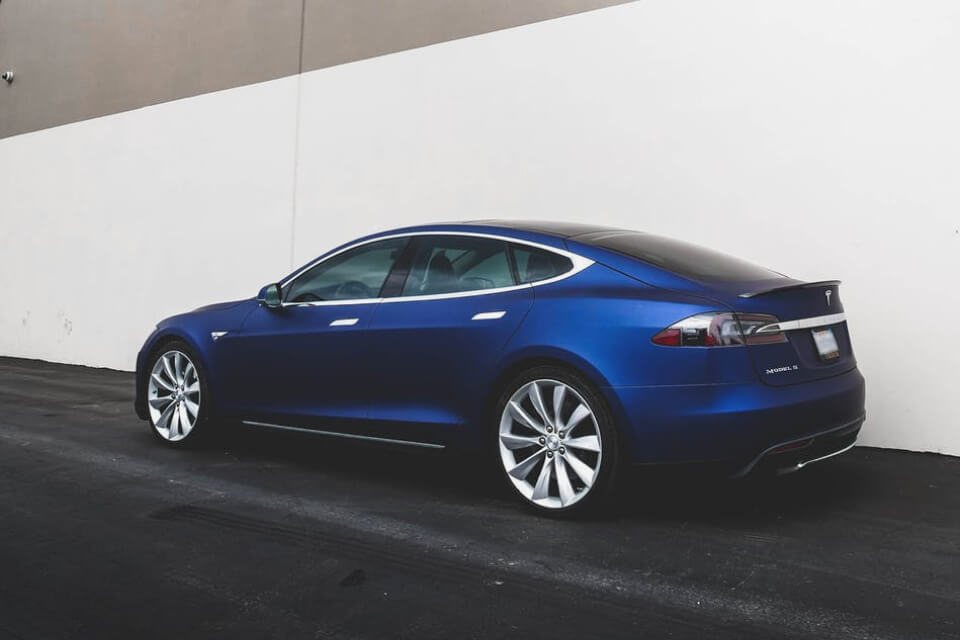The Future of Autonomous Vehicles: What to Expect
The future of autonomous vehicles is a topic that has been generating a lot of interest and excitement in recent years. With the rapid advancements in technology, the automotive industry is on the brink of a major transformation. The development of self-driving cars, trucks, and other vehicles is poised to revolutionize the way we travel and transport goods. As the world moves towards a more connected and automated future, the potential impact of autonomous vehicles on safety, efficiency, and convenience is becoming increasingly clear. The integration of artificial intelligence, machine learning, and sensor technology is paving the way for a new era of transportation. The Future of Autonomous Vehicles: What to Expect
The next evolution of transportation, the development of driverless vehicles, is poised to revolutionize the way we commute. The potential impact of autonomous vehicles on traffic congestion, environmental sustainability, and urban planning is generating significant interest and speculation. The emergence of self-driving cars as a viable alternative to traditional vehicles has the potential to reshape the automotive industry and redefine the concept of personal mobility. As the technology continues to mature and gain acceptance, the future of autonomous vehicles holds the promise of safer roads, more efficient transportation systems, and enhanced mobility for people of all abilities.
The Evolution of Autonomous Vehicles
Autonomous vehicles, also known as self-driving cars, have come a long way since their inception. The development and evolution of autonomous vehicles can be traced back to the 1920s when the first attempts at creating driverless vehicles were made. However, it wasn’t until the 2000s that significant advancements in technology, such as advanced sensors, artificial intelligence, and machine learning, paved the way for the modern autonomous vehicles we see today. These advancements have not only made autonomous vehicles a reality but have also sparked a revolution in the automotive industry.
Today, autonomous vehicles are being developed and tested by major car manufacturers, tech companies, and startups around the world. These vehicles are equipped with a wide array of sensors, including cameras, radar, lidar, and ultrasonic sensors, which enable them to perceive and navigate the environment around them. Additionally, advancements in connectivity and communication technologies have allowed autonomous vehicles to interact with each other and with infrastructure, further enhancing their capabilities and safety.
The Impact on Transportation and Mobility
The widespread adoption of autonomous vehicles is expected to have a profound impact on transportation and mobility. With the potential to reduce traffic congestion, accidents, and emissions, autonomous vehicles have the power to transform the way people and goods move from one place to another. In urban areas, autonomous ridesharing services could lead to fewer individual car ownership and more efficient use of road space. This, in turn, could free up parking spaces for other uses and reduce the overall demand for parking in cities. Additionally, autonomous vehicles could provide new mobility options for the elderly, disabled, and those without access to private transportation, leading to increased accessibility and inclusivity in transportation.
Furthermore, the rise of autonomous vehicles is expected to impact various industries, including insurance, public transportation, and urban planning. As the technology matures and becomes more widespread, it is likely to shift the dynamics of urban development and infrastructure, leading to new opportunities and challenges for city planners and policymakers. The potential economic impact of autonomous vehicles is also significant, with the potential to create new business models and job opportunities while disrupting traditional transportation and logistics sectors.
Safety and Regulatory Considerations
One of the most critical aspects of autonomous vehicles is safety. While proponents of the technology argue that self-driving cars have the potential to significantly reduce the number of traffic accidents caused by human error, there are still concerns about the safety and reliability of autonomous systems. Ensuring the safety of autonomous vehicles requires rigorous testing, validation, and certification processes to mitigate the risks associated with their deployment on public roads. Additionally, there is a need for clear and consistent regulations and standards to govern the development, testing, and operation of autonomous vehicles, ensuring their safe integration into the existing transportation ecosystem.
Regulatory bodies and governments around the world are grappling with the complex task of creating a legal framework for autonomous vehicles. This includes addressing liability issues in the event of accidents, defining the roles and responsibilities of different stakeholders, and establishing guidelines for data privacy and cybersecurity. As autonomous vehicles continue to evolve, it is essential for policymakers to strike a balance between fostering innovation and ensuring public safety, ultimately shaping the future of autonomous vehicle regulations.
Challenges and Limitations
Despite the significant progress made in the development of autonomous vehicles, there are still several challenges and limitations that need to be addressed before widespread adoption can occur. One of the primary challenges is the need to further develop and refine the technology to handle complex and unpredictable real-world driving scenarios, such as adverse weather conditions, construction zones, and interactions with non-autonomous vehicles and pedestrians. Additionally, ensuring the cybersecurity of autonomous vehicles is crucial to prevent potential cyber-attacks and unauthorized access to vehicle systems.
Another challenge is the public acceptance and trust in autonomous vehicles. Building confidence in the safety and reliability of self-driving cars among the general public is essential for their successful adoption. This requires transparent communication about the capabilities and limitations of autonomous vehicles, as well as education and awareness programs to address misconceptions and concerns. Moreover, ethical considerations, such as the decision-making algorithms in the event of unavoidable accidents, raise complex moral and legal questions that need to be carefully navigated as autonomous vehicles become more prevalent on the roads.
The Role of Artificial Intelligence and Machine Learning
At the heart of autonomous vehicles lies advanced artificial intelligence (AI) and machine learning algorithms. These technologies enable autonomous vehicles to perceive and interpret their surroundings, make real-time decisions, and learn from experience. AI and machine learning algorithms are used for tasks such as object detection, path planning, and behavior prediction, allowing autonomous vehicles to navigate complex and dynamic environments. As these technologies continue to advance, the capabilities of autonomous vehicles are expected to improve, leading to safer and more efficient transportation systems.
Furthermore, the development of AI and machine learning for autonomous vehicles has implications beyond just driving. These technologies have the potential to revolutionize the entire automotive industry, from vehicle design and manufacturing to predictive maintenance and personalized user experiences. By leveraging data collected from sensors and vehicle systems, AI and machine learning can enable predictive analytics, proactive maintenance, and customized services, ultimately enhancing the overall ownership and operational experience of autonomous vehicles.
The Future of Urban Mobility
Autonomous vehicles are poised to play a significant role in shaping the future of urban mobility. As cities continue to grow and face challenges related to congestion, pollution, and accessibility, autonomous vehicles offer a potential solution to address these issues. The integration of autonomous ridesharing services, public transportation, and last-mile delivery using self-driving vehicles has the potential to transform urban transportation, making it more efficient, sustainable, and accessible for all residents.
Additionally, the development of autonomous vehicles is closely tied to the concept of smart cities, where interconnected infrastructure, data-driven decision-making, and sustainable transportation systems converge. By leveraging the capabilities of autonomous vehicles, cities can optimize traffic flow, reduce emissions, and improve the overall quality of life for their residents. This vision of the future of urban mobility is driving investments and collaborations between technology companies, automotive manufacturers, and city planners to create innovative solutions that harness the potential of autonomous vehicles.
Sustainability and Environmental Impact
With the potential to optimize driving patterns, reduce traffic congestion, and facilitate the adoption of electric and shared mobility, autonomous vehicles have the potential to contribute to sustainability and reduce the environmental impact of transportation. By enabling more efficient use of vehicles, reducing the need for parking spaces, and promoting electric and alternative fuel technologies, autonomous vehicles can play a role in reducing greenhouse gas emissions and mitigating the environmental impact of transportation.
Furthermore, the development of autonomous vehicles presents an opportunity to rethink urban design and transportation infrastructure, with a focus on creating more sustainable and eco-friendly urban environments. The integration of autonomous vehicles with public transportation, cycling infrastructure, and pedestrian-friendly urban spaces can lead to a more balanced and sustainable transportation ecosystem. As autonomous vehicles continue to evolve and become more prevalent, their potential to contribute to sustainability and environmental conservation will be a key consideration for policymakers and urban planners.
Ethical and Social Implications
The rise of autonomous vehicles raises complex ethical and social implications that need to be carefully considered. One of the key ethical considerations is the programming of decision-making algorithms in situations where accidents are unavoidable. This raises questions about how autonomous vehicles should prioritize the safety of different road users, including passengers, pedestrians, and other drivers. Additionally, issues related to data privacy, cybersecurity, and the impact of autonomous vehicles on employment and labor markets need to be addressed to ensure a fair and equitable transition to autonomous transportation systems.
From a social perspective, the adoption of autonomous vehicles has implications for accessibility, inclusivity, and the overall urban experience. Ensuring that autonomous transportation systems are accessible to all members of society, including those with disabilities and those with limited access to transportation, is essential for creating a more inclusive and equitable urban environment. Moreover, the potential impact of autonomous vehicles on employment in the transportation and logistics sectors requires proactive measures to support affected workers and facilitate a smooth transition to the future of mobility.
| Aspect | Expectation |
|---|---|
| Safety | Autonomous vehicles are expected to significantly reduce traffic accidents and fatalities. |
| Technology | Advancements in AI and sensor technology will continue to improve the capabilities of autonomous vehicles. |
| Regulation | There will be ongoing efforts to establish laws and regulations for autonomous vehicles to ensure safety and accountability. |
| Infrastructure | Cities and roadways may need to be adapted to better accommodate autonomous vehicles and their communication systems. |
| Adoption | Over time, autonomous vehicles are expected to become more widely accepted and integrated into daily life. |



